Around the world, Scouts are known for their commitment to making the world a better place. In Western Kenya, Scouts are doing their part by planting millions of trees at schools and homes across the region.
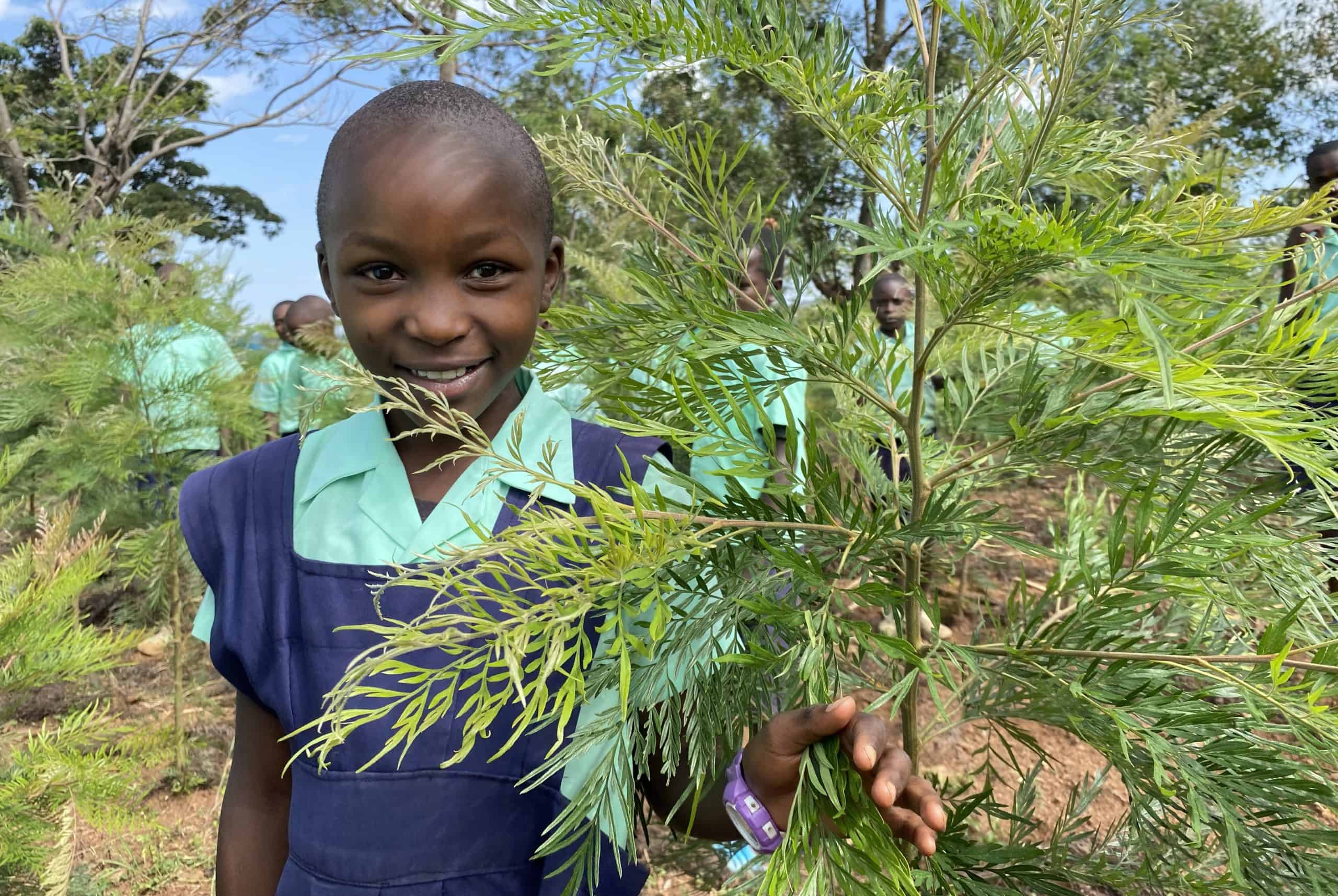
“They make the environment so very beautiful,” says 13-year-old Jamin Hakims Orera.
Trees for the Future (TREES) partnered with the Kenya Scouts Association (KSA) with a goal to plant one million trees in Homa Bay, Kenya in 2019. Three years later, the partnership has grown to include Scouts in 120 schools (40 each) across Homa Bay, Migori, and Kisumu Counties. To date, TREES and the Kenyan Scouts have planted 3,148,755 trees across the Lake Victoria region.
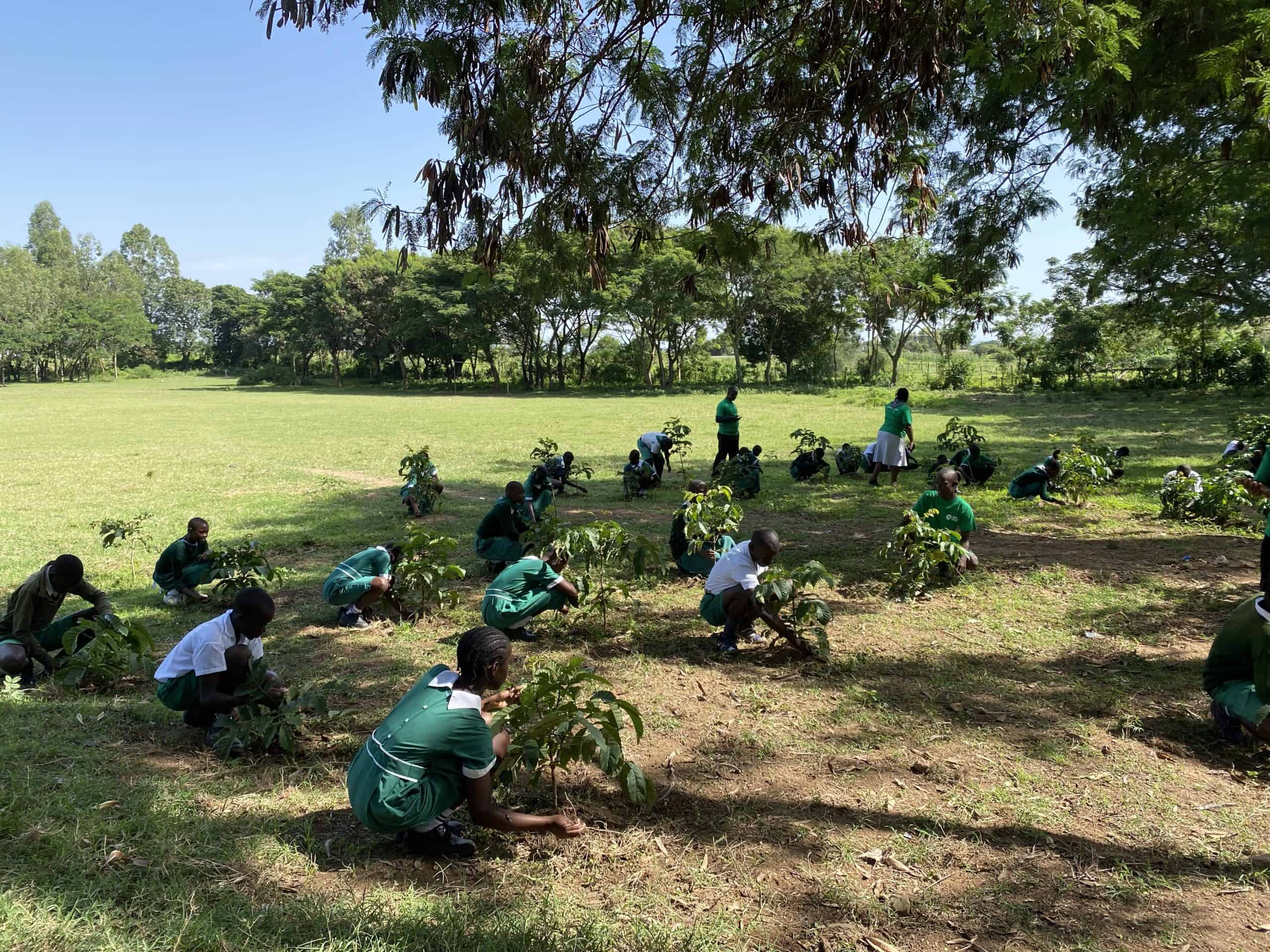
Learning from Trees for the Future Staff
Scouts and their leaders receive seeds and training from expert TREES staff.
“This is a good initiative for the Scouts, involving and empowering them, from nursery establishment to putting the tree in the ground, creates ownership, and this is something that gives them the core of their being,” said Esther Agutu, the teacher in charge of Scouts at GOK Kokech Primary School.
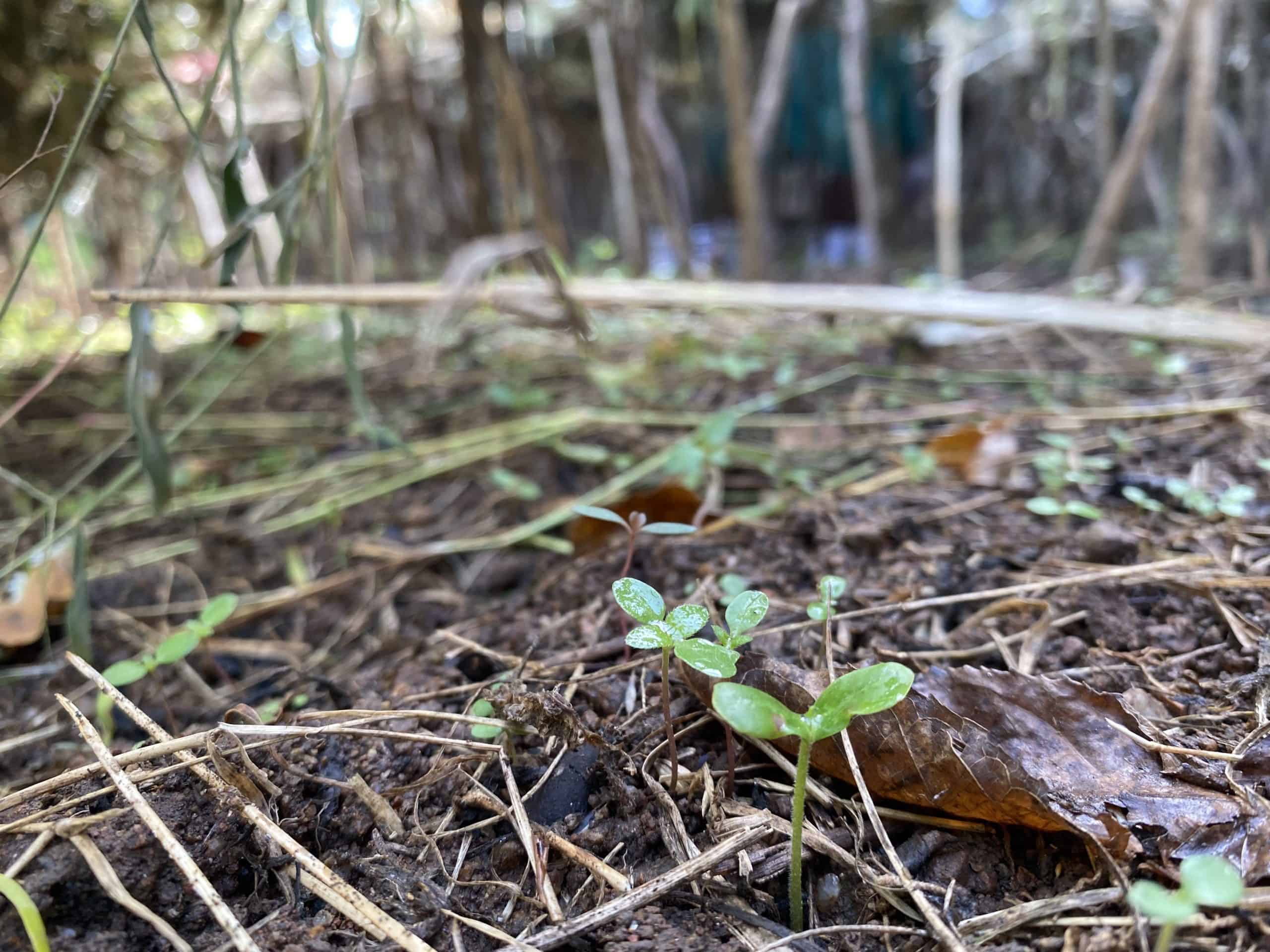
The Scouts learn to grow their own trees from seed on the school grounds.
14-year-old Stacey Otieno explains how she and her fellow scouts start each round of trees in their school nursery.
“We [prepare] the topsoil… We soak the seeds for 24 hours. After that, we spread them. Then they take something like two weeks. Then they grow!”
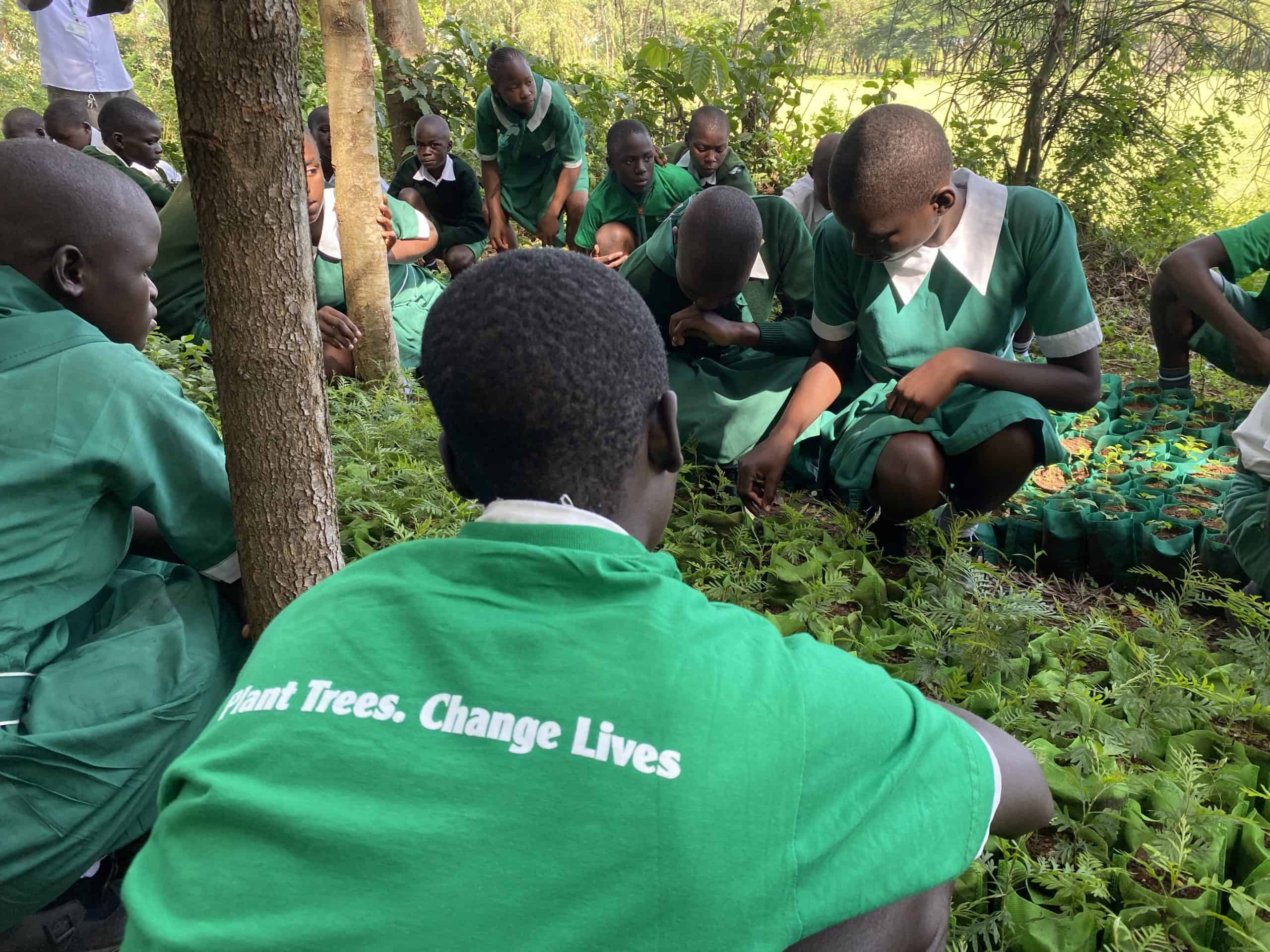
Scouts tend to their tree seedlings in nurseries until they are ready to be planted.
Planting Trees at School and at Home
Once the seedlings are ready to leave the nurseries, the students plant the majority at their schools. The trees are intercropped in school vegetable gardens, planted as shade trees throughout the school grounds, and as living fences around the perimeter. Others are shared with the community, and many students bring trees home with them.
“At home I have six trees growing so well,” says one student.
“About ten,”13-year-old Francis says of his at-home count.
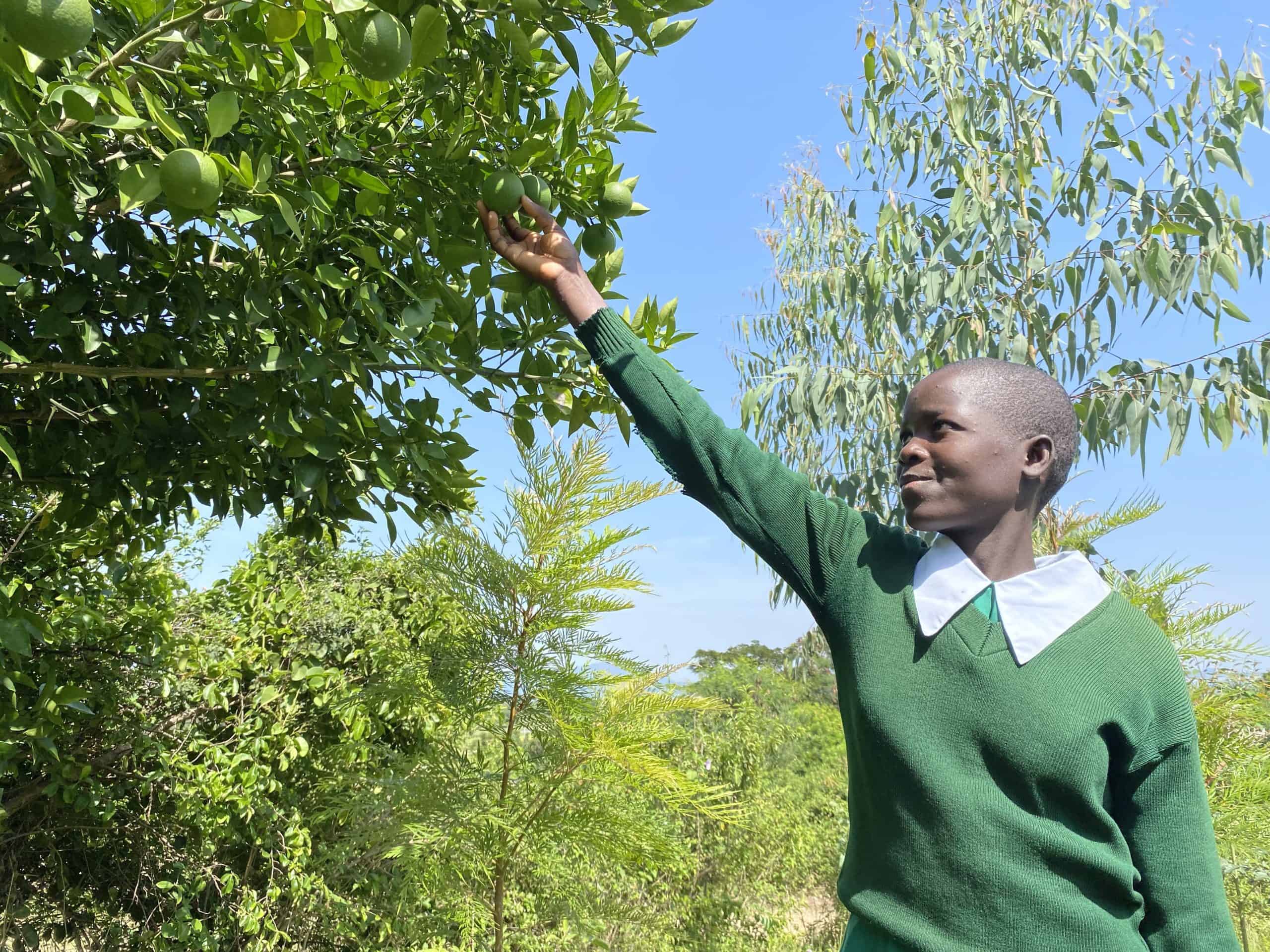
Down the road from her school, 14-year-old Priscilla has planted 20 trees at her home.
Down the road from her school, 15-year-old Priscilla Otieno has a thriving collection of agroforestry and fruit trees growing on the hillside between her home and Lake Victoria.
“I have planted 20 trees. Grevillea and some fruits like mango. I want to plant 25 more.”
Planting a Better Future
Growing up in a region heavily impacted by climate change, the Scouts are learning how trees can make a lasting difference.
“Working with Scouts allows us to reach into rural communities to repair degraded landscapes and inspire the next generation to get involved in sustainable solutions for their planet,” explains Pilly Catherine, Kenya Partnership Coordinator.
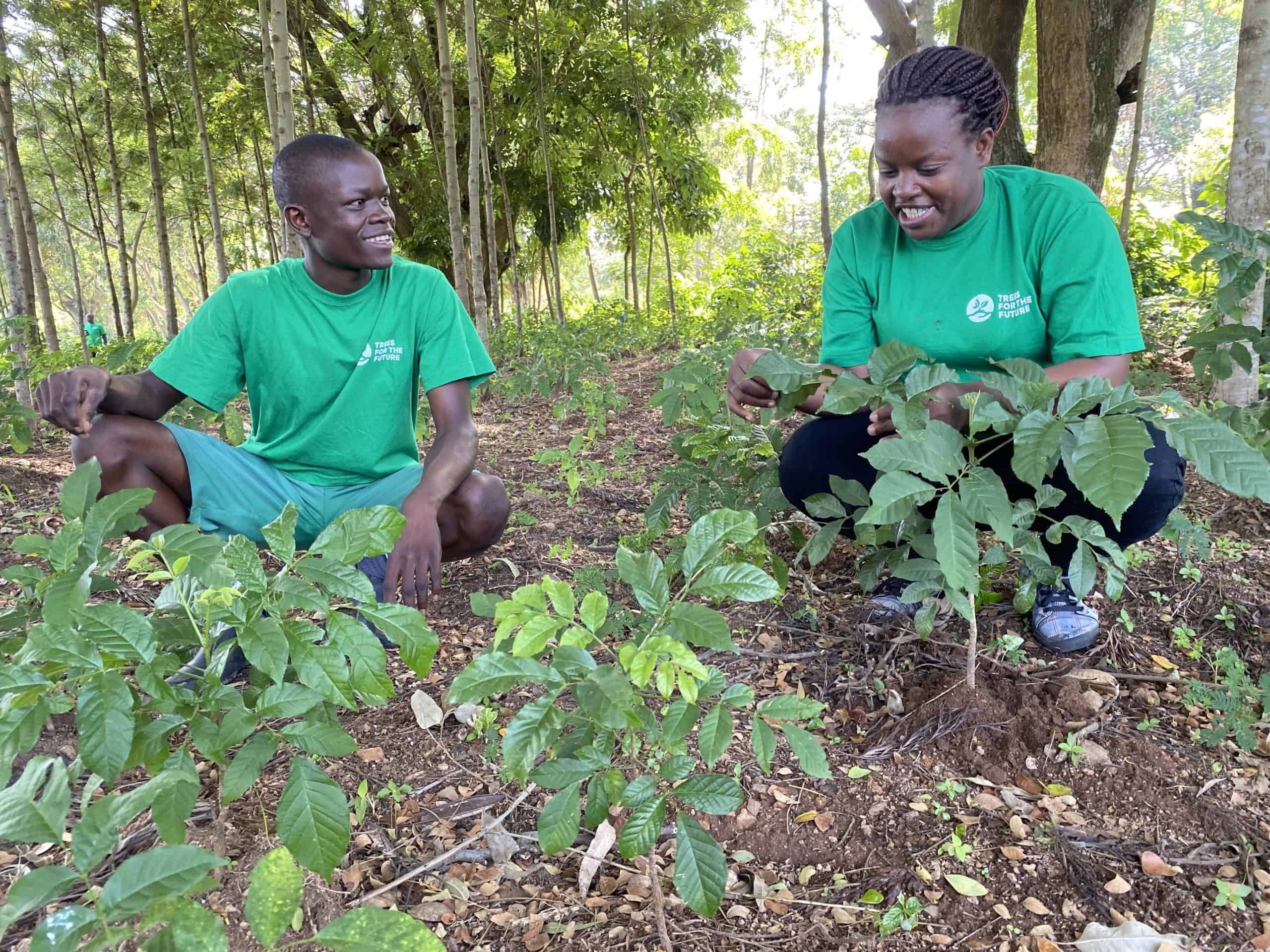
Partnerships Coordinator Pilly Catherine (right) trains Scouts in tree planting and management.
“They can see as they grow up that they will inherit a healthy environment,” says Scout Leader James Otina. “This gives them that instinct to take care of the environment, because they will soon be the heirs of this environment.”
As they learn more through the program, Agutu says she sees students taking the initiative to harvest their own seeds and experiment on their own.
“In the future, I can make my own plants and seed beds and I can plant many trees to help the villagers,” says 14-year-old Sweeney.
“Once the knowledge is given to the young ones, this is the future of the country. This is our future.” says Agutu.
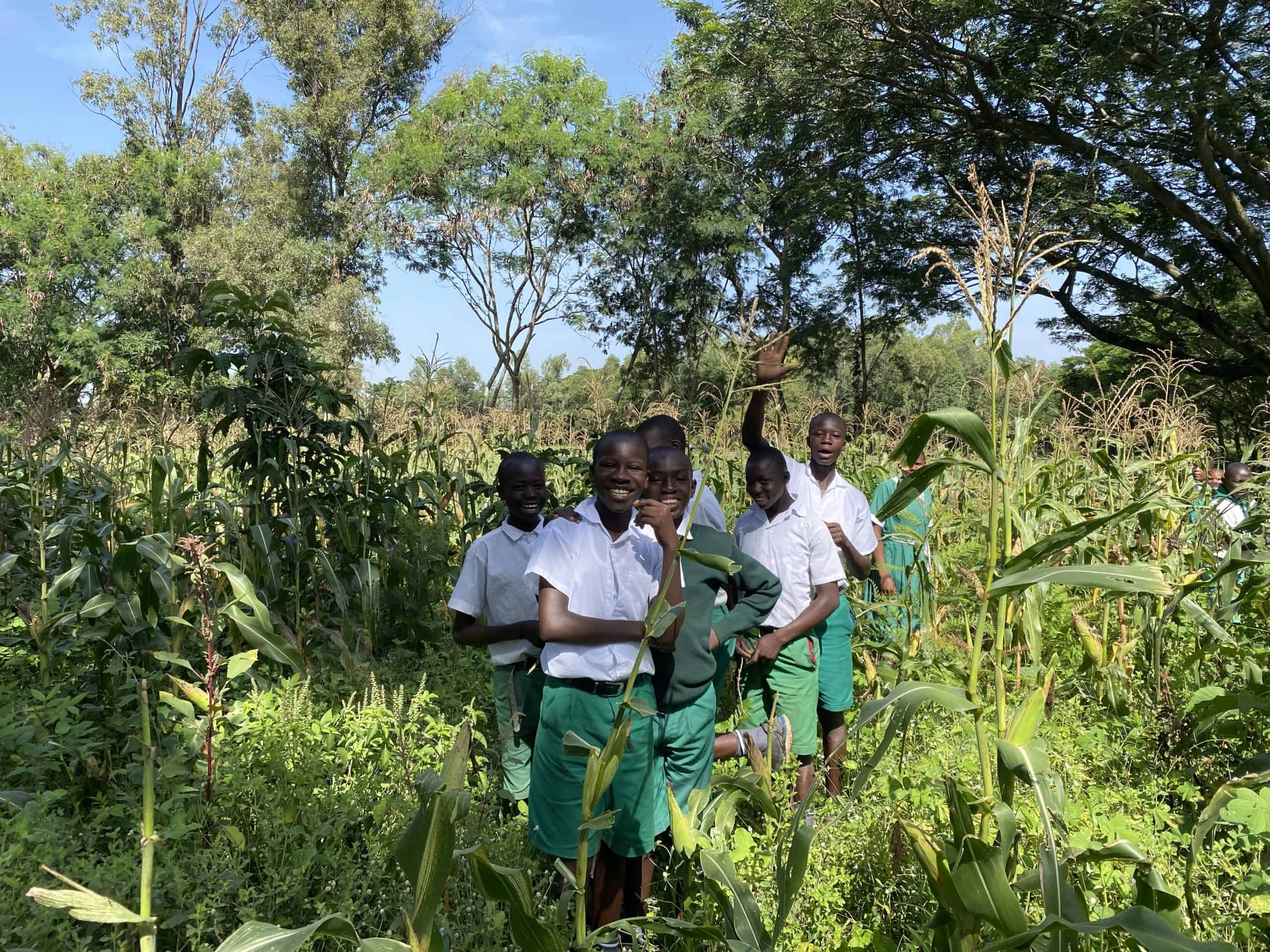
The partnership between TREES and KSA is in coordination with Kenya’s Vision 2030 of 10% tree cover by 2030 – a 6.3% increase from the country’s existing 2.7% tree cover.
“We are happy and we are privileged to have this program in our school,” Agutu says. “And we are trying to even teach the neighboring schools so that the program [can spread].”